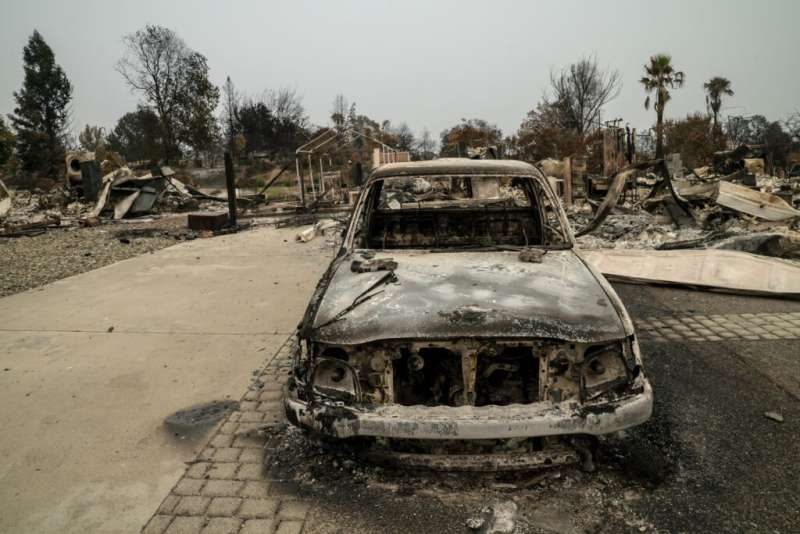Pollutants from burning structures linger in waterways post-wildfire

As the frequency of wildfires has increased, so have pollutants in the waters from burned watersheds, say researchers in a review paper that highlights the need for more research in the area.
"Much less studied are the effects of fire burning not only forests and grasslands but also houses, vehicles and other human-made material," said Stephen LeDuc of the U.S. Environmental Protection Agency's Center for Public Health and Environmental Assessment. "There have only been a few studies of pollutants mobilized from these types of fires."
LeDuc is a coauthor of the new paper, published today in Water Resources Research.
The paper looks at the trends in water after wildfires as documented across 184 scientific papers since 1980. Among the trends they identified were that stream flow often increases for a few years following a wildfire, as do sediments and water temperature. Nutrients also often increased, along with toxic metals and some organic chemicals, which sometimes reach 10 to 100 times higher concentrations than pre-fire levels.
Some post-fire chemicals in the water, such as arsenic, can exceed regulatory limits, even in processed drinking water. Elevated levels of the carcinogen benzene in tap water following the burning of houses and vehicles in the town of Paradise, California, are among the reports cited in the review. Researchers also found higher concentrations of metals in the ash from these fires, which could potentially affect runoff.
The review found that little research has been done on the kinds of pollutants that come from urban wildfires. This leaves water managers and planners at a disadvantage when recovering from a fire.
"We point this out as a major gap in the scientific understanding of fire effects," LeDuc said.
"In my view, the main reason for the knowledge gap is the challenge of setting up an urban water quality monitoring program on short notice, like after a fire," said Dennis Hallema, a hydrologist at Desert Research Institute in Las Vegas who was not involved in the study. "There's plenty of interest, but at the end of the day, successful water quality monitoring efforts come out of projects that were approved in time."
The study also looked at the effects of wildfire on the surrounding ecosystem.
"Fire frequency is increasing in places like in the western U.S. due in part to climate change, and there is potential for areas burned by fire to become longer-term stressors to water quality if the previous vegetation is slow to recover or fails altogether," said LeDuc. "[But] burned areas could be targeted for restoration efforts, such as erosion control or plantings." One restoration effort, noted in the paper, was by the Pueblo of Santa Clara after the Las Conchas Fire in 2011.
The authors write that they hope their review will help water quality managers and communities plan for, and recover from, the impacts of wildfires on their water.
More information: M. J. Paul et al, Wildfire Induces Changes in Receiving Waters: A Review With Considerations for Water Quality Management, Water Resources Research (2022). DOI: 10.1029/2021WR030699
Journal information: Water Resources Research
Provided by American Geophysical Union




















